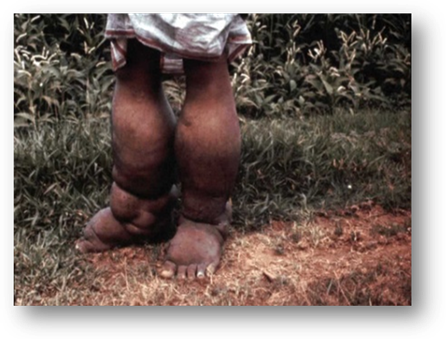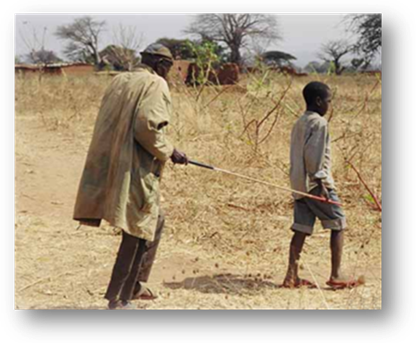Written by David Molyneux, Liverpool School for Tropical Medicine & Lorenzo Savioli, World Health Organisation
Elephantiasis (filariasis), schistosomiasis, onchocerciasis (river blindness), dracunculiasis, neurocysticercosis – if you have heard of these diseases at all, you probably think of them as being rare diseases, but in all probability you’ve never heard of them or many other diseases like them. They are part of a group of infections called the neglected tropical diseases (NTDs) – diseases of neglected populations, those who are at the bottom of the social and economic ladder, the so-called “bottom billion”. They are, in short, infections which are most prevalent amongst the poorest.

World Health Organization (WHO) estimates that over a billion people are infected with these “rare” conditions with many more at risk. NTDs do not reach the political radar screen, as those infected have no voice and live at the end of the road. Some kill, such as sleeping sickness, rabies or visceral leishmaniasis, but others disfigure, deform, stigmatize and blind. They do not threaten the developed world like the truly rare pandemic viruses and do not hit the headlines as tourists are rarely infected. These diseases, though, are the true markers of poverty -you rarely get them if you are not poor. You can become infected if you have no access to health services, clean water or sanitation, and you may be unfortunate enough to harbour more than one of these exotic rarities. Furthermore, if you live in the tropics they are far from rare; they are the most prevalent infections of adults.
Fortunately, the development of a movement to control, eliminate or even eradicate NTDs has gathered strength over the last decade. This momentum has been generated by a coming together of science, the creation of partnerships – in particular the generosity of pharmaceutical companies – and the leadership of the WHO. Academia and non-governmental development organizations have contributed effectively to research and delivery of donated drugs. Ten major pharmaceutical companies have made long term commitments to provide the essential drugs to treat these diseases often for as long as needed. The estimated value of this annual donation is of the order of over US$2 billion.

As a result of this movement to control, eliminate and eradicate them, NTDs have become a brand akin to those more common conditions that hit the headlines such as malaria, TB and HIV/AIDS. Successes have been made, for example, in the spectacular reduction of dracunculiasis cases (guinea worm disease). Cases are now counted in hundreds( 542 reported cases in 2012) rather than hundreds of thousands. Dracunculiasis is now endemic in four countries compared with over a million annual cases when the eradication programme began in the late 1980s and is hopefully likely to be eradicated by 2015. There are no drugs or vaccines for dracunculiasis, only good public health measures, which have made a spectacular impact. Moreover, China and South Korea have eliminated transmission of elephantiasis and several other countries are evaluating if transmission has stopped; onchocerciasis no longer causes blindness in more than 20 African countries; and the major public health problem of schistosomiasis-induced bladder cancer has been markedly reduced in Egypt.

Really prevalent diseases have become rare, where previously they were a major scourge, but many remain to be treated in challenging settings such as countries that have suffered years of conflict. However, progress is being made, populations are accessing free medicines and epidemiological evaluations are showing significant success, as annual treatment with donated drugs reduce morbidity and transmission.
The strategy of preventive chemotherapy treated more than 700 million people in over 70 countries in the tropics according to the latest WHO report “Sustaining the drive to overcome the global impact of neglected tropical diseases” published last month, a year after the London Declaration made the commitment to make a difference and to get diseases rare in the developed world publicly recognised as a major impediment to poverty alleviation as well as provide quality drugs to people who have had limited access in the past.
To quote the Director General of WHO: “We are moving ahead towards achieving universal health coverage with essential interventions for neglected tropical diseases, the ultimate expression of fairness.”
What we think is rare is not rare to the poorest on the planet- now we have a window of opportunity to make these afflictions truly rare for the poorest in populations hitherto neglected.
Comments